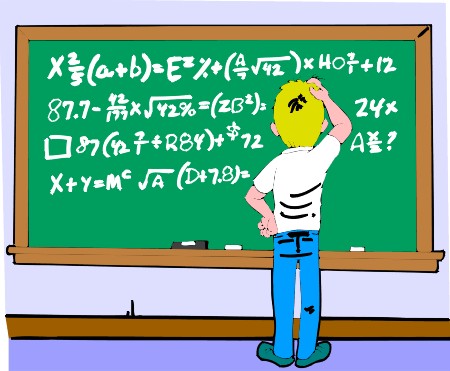
 |
||||||||
Relazione sul laboratorioIl primo giorno di laboratorio siamo andati in giardino e abbiamo fatto un esperimento sulla velocità: abbiamo preso dei coni e li abbiamo predisposti sul terreno a una distanza uguale fra loro, poi il professore ci ha divisi in tre gruppi formati da tre persone ciascuna . Ogni gruppo sceglieva una persona la quale doveva percorrere il percorso, fermandosi a ogni cono contando 5,10,12 secondi. Noi con un cronometro dovevamo cronometrare il tempo che impiegavano per percorrerlo. Poi abbiamo cambiato il percorso, lo abbiamo messo a una distanza maggiore l' uno dall'altro e lo abbiamo cronometrato ancora. In classe abbiamo fatto degli schemi dove abbiamo riportatola distanza, il tempo e i secondi, poi abbiamo calcolato la media e abbiamo costruito un altro schema cartesiano riportando la velocità e la distanza. Il secondo giorno siamo andati in aula di scienze e il professore ci ha consegnato una scheda che spiegava come si usa il sensore di movimento che è uno strumento con il quale si seguono i movimenti. Il terzo giorno abbiamo fatto degli esperimenti con una palla. Abbiamo costruito un percorso con dei libri, abbiamo messo il sensore sopra a uno scatolone e abbiamo fatto correre la palla, con questo movimento si sono creati degli schemi sul computer. Il quarto giorno abbiamo fatto degli esperimenti camminando su e giù, poi alcune persone sono andate fuori in corridoio mentre altre sono rimaste in classe e hanno fatto un grafico, poi quando gli altri sono entrati dovevano ricostruirlo uguale. Il quinto giorno abbiamo fatto altre prove con il moto e poi il professore ci ha spiegato come si misura il tempo e la distanza in uno schema, poi ci ha consegnato delle schede sul movimento alle quali dovevamo rispondere. Irreversibile è una azione che non si può più cambiare esempio: se si taglia un foglio non si può più ricongiungere uguale a prima, si può riattaccare con lo scotch ma non sarebbe la stessa cosa. Eccovi allora la "regola" : i processi irreversibili servono per "ordinare" tutti gli avvenimenti , cioè per stabilire una serie ordinata di "prima" e di "dopo " o, come si dice, un ordine di tempo. Il "prima"e il "dopo" è un problema del quale si è occupato lo scienziato Reichenbach. Questo scienziato ha indicato una" regola " utile per sapere se un avvenimento viene prima di altri.E cco un problema: abbiamo una pellicola cinematografica e vogliamo sapere in che senso dobbiamo avvolgerla nella bobbina. Individuiamo su un fotogramma una tazzina di cioccolato con panna e, accanto, un bricco vuoto; su un altro fotogramma, non distante dal primo, la stessa tazzina con la sola cioccolata e il bricco colmo di panna. Così, ora sappiamo come avvolgere la pellicola, perchè certamente il secondo fotogramma viene prima dell'altro.
|
Report on the laboratory
Every group has choosen a person which had to cover the distance, stopping itself to every cone, counting 5,10,12 second ones. We had to time with a chronometer the time that he employed to cover the distance. Then we have changed the distances, we have timed him still. In class we have designed some diagrams of the outlines where we have reported the distance, the time, then we have calculated the average and we have designed another cartesian diagram with the speed and the distance. During the second day in the science - laboratory the prof explained us how the motion - sensor is usedlike a tool with that the movements are followed. The third day we have made some experiments with a ball. We have constructed a track with some books, we have put the sensor over to a large box and have made to run the ball, these movements have created some graphics on the computer. The fourth day we have made other experiments walking up and down, then some persons have gone outside in corridor while the others remained in class have made a diagram, then when the others entered, they had to reconstruct itl. The fifth day we have made other tests with the motion - sensor and then the prof has explained us like to measure the time and the distance in a graph. Other things: Irreversible is an action that cannot be more changed. an example: if a sheet is cut cannot be more rejoined like before, we can reattach it with the Scotch tape but it will not be the same thing. This is the "rule": the irreversible processes arrang all the events, they establish a ordered series: "before" and "after", i.e.a time order. "Before" and " after ": this is a problem in which Reichenbach was interested. This scientist has indicated a "useful rule" to know
if a event comes before another. This is a problem:
we have a film
and we want to know in that sense we must wrap it in the spool. We
see a photogram with a chocolate cup with cream and, next,
a cream - jug empty;
on an other photogram, not distant from the first one, the same cup
with
only chocolate and the cream - jug overflow. Therefore, now
we know like to wrapp the film, because we are sure what is the first
photogram. |
|
 |
||